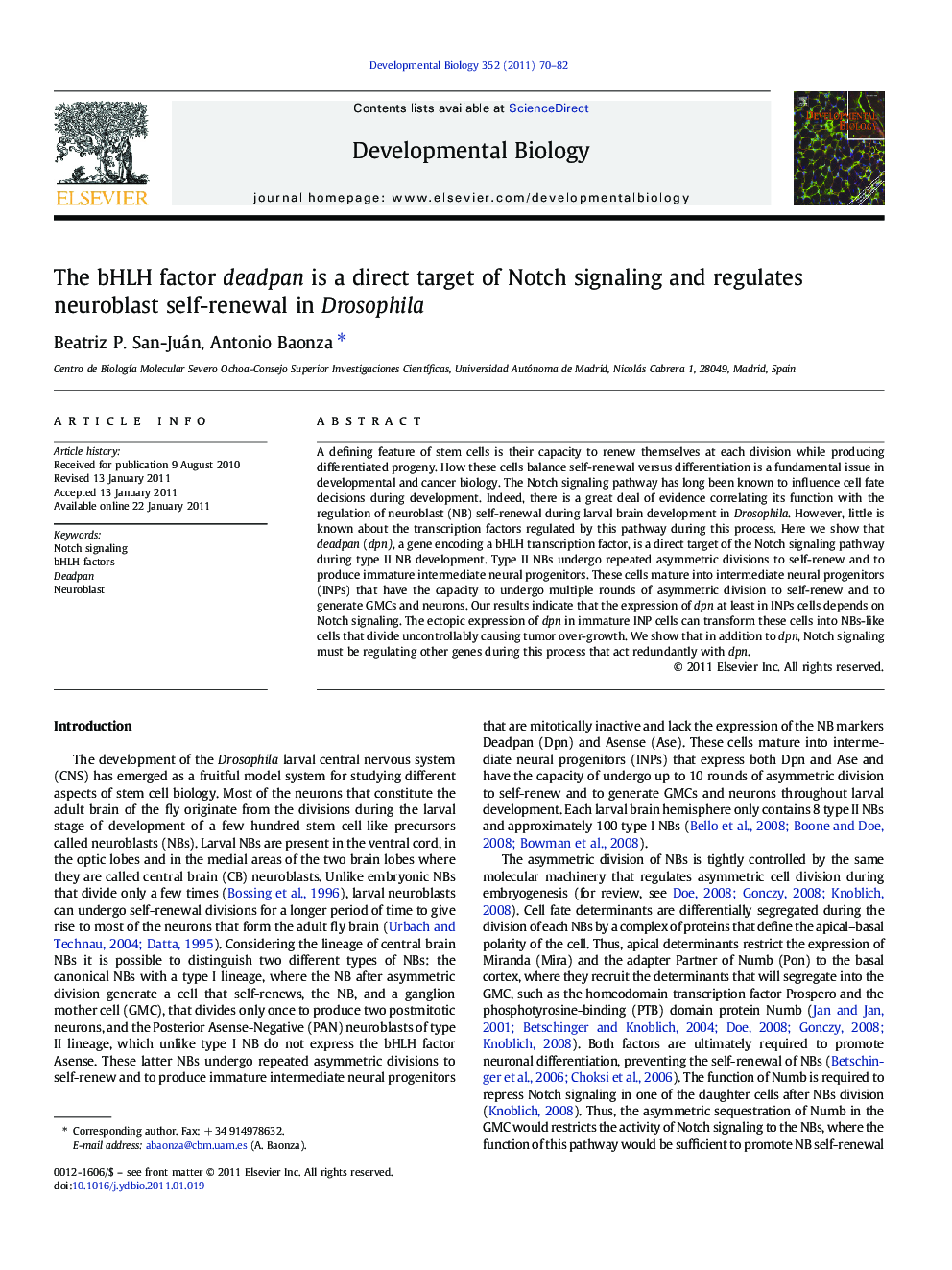| Article ID | Journal | Published Year | Pages | File Type |
|---|---|---|---|---|
| 2173537 | Developmental Biology | 2011 | 13 Pages |
A defining feature of stem cells is their capacity to renew themselves at each division while producing differentiated progeny. How these cells balance self-renewal versus differentiation is a fundamental issue in developmental and cancer biology. The Notch signaling pathway has long been known to influence cell fate decisions during development. Indeed, there is a great deal of evidence correlating its function with the regulation of neuroblast (NB) self-renewal during larval brain development in Drosophila. However, little is known about the transcription factors regulated by this pathway during this process. Here we show that deadpan (dpn), a gene encoding a bHLH transcription factor, is a direct target of the Notch signaling pathway during type II NB development. Type II NBs undergo repeated asymmetric divisions to self-renew and to produce immature intermediate neural progenitors. These cells mature into intermediate neural progenitors (INPs) that have the capacity to undergo multiple rounds of asymmetric division to self-renew and to generate GMCs and neurons. Our results indicate that the expression of dpn at least in INPs cells depends on Notch signaling. The ectopic expression of dpn in immature INP cells can transform these cells into NBs-like cells that divide uncontrollably causing tumor over-growth. We show that in addition to dpn, Notch signaling must be regulating other genes during this process that act redundantly with dpn.
Research Highlights► Notch signaling regulates type II Neuroblast development through Su(H). ► deadpan is a direct target of Notch signaling during type II NB development. ► Ectopic expression of dpn in type II NBs causes tumor over-growth.
